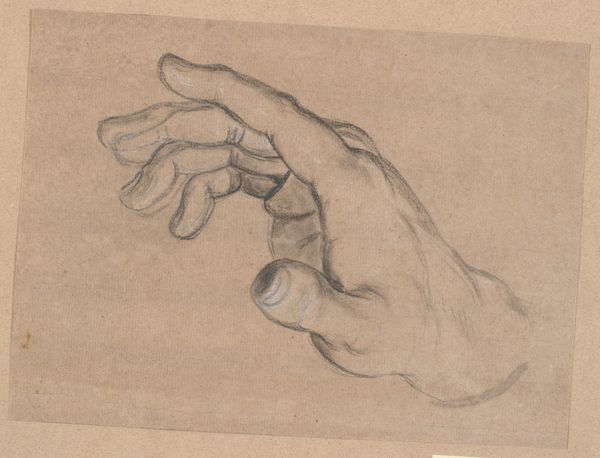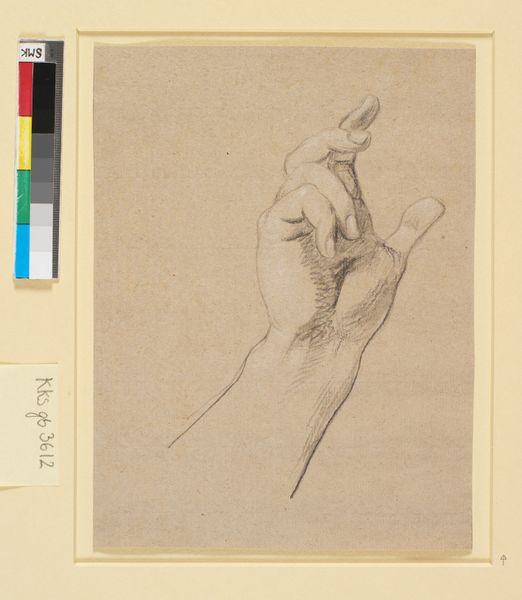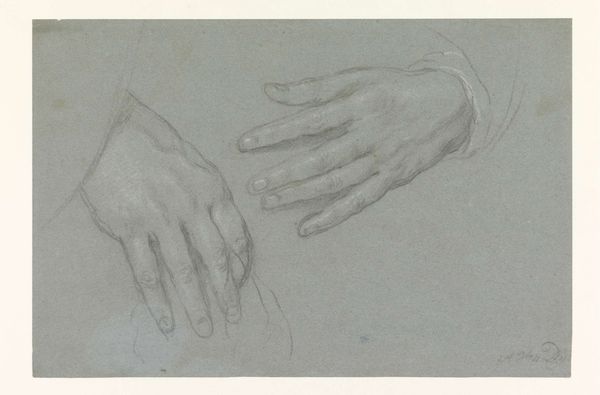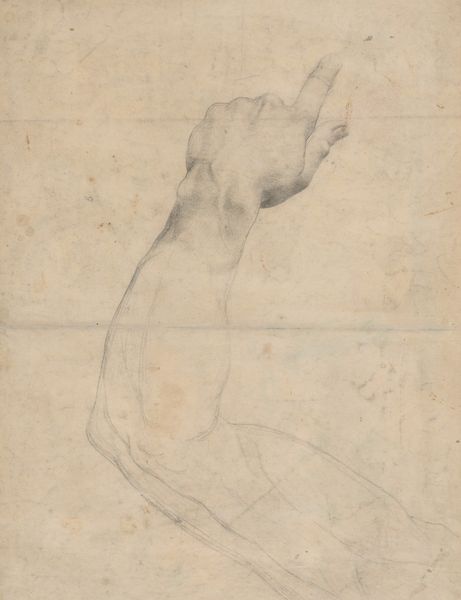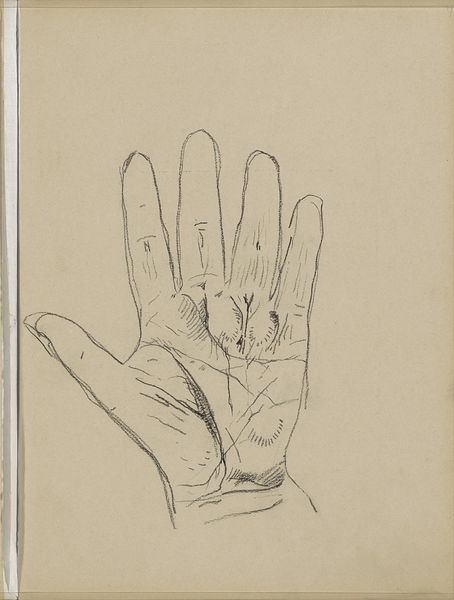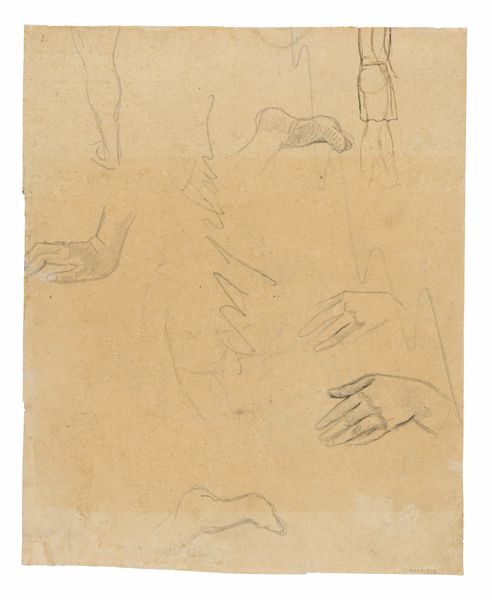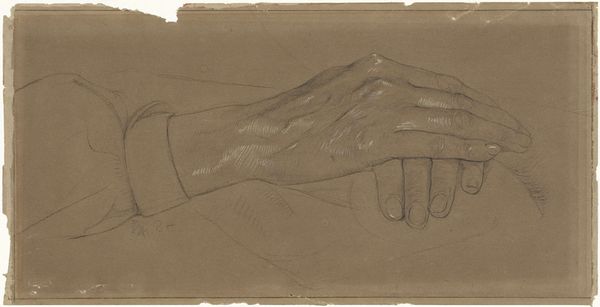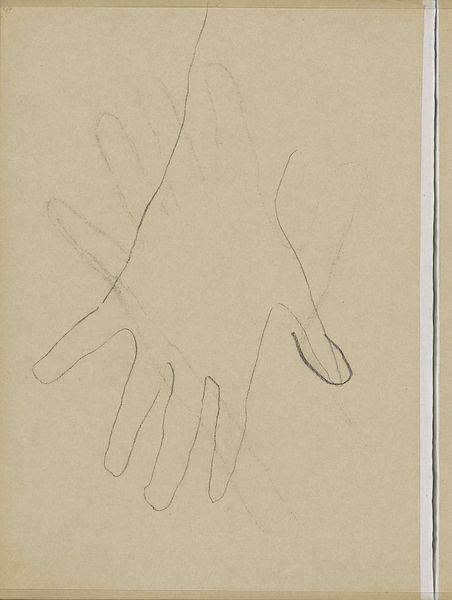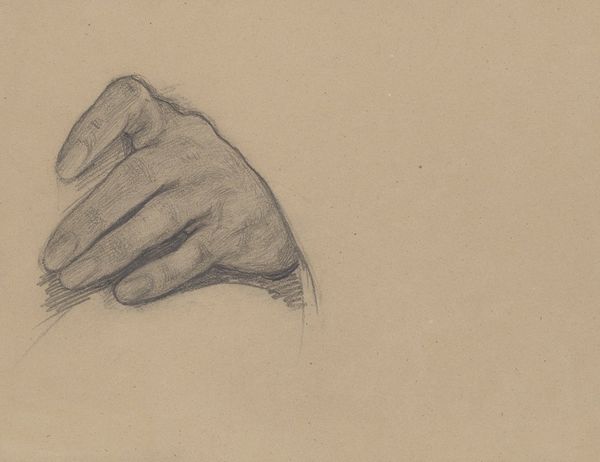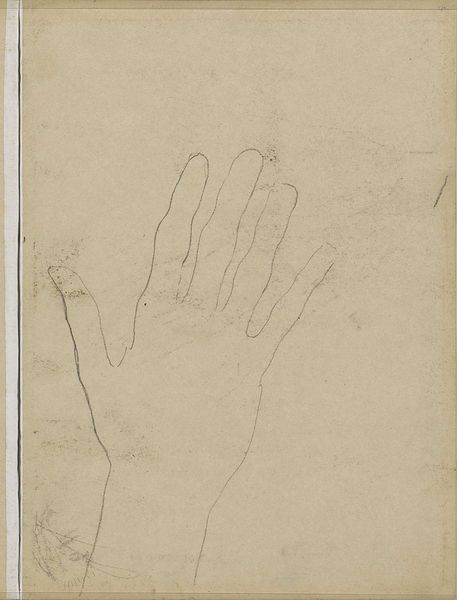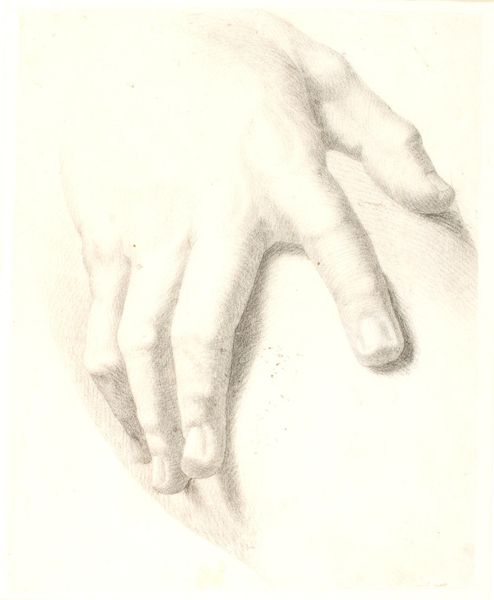
Studie af den ene af baggrundsfigurernes hænder 1778 - 1779
0:00
0:00
drawing, ink, pencil, charcoal
#
portrait
#
drawing
#
ink
#
pencil
#
charcoal
#
northern-renaissance
#
academic-art
Dimensions: 407 mm (height) x 292 mm (width) (bladmaal)
Curator: We're looking at a study drawing by Nicolai Abildgaard from around 1778-1779. It’s titled "Studie af den ene af baggrundsfigurernes hænder," which translates to "Study of the Hand of One of the Background Figures." The medium includes ink, pencil, and charcoal on paper. It's currently held at the SMK, the National Gallery of Denmark. Editor: The immediate impression is one of subdued elegance. There is something very gentle in the depiction of this hand, a surprising amount of care taken with what is, ostensibly, just a fragment. The sepia tones add a layer of aged sophistication. Curator: Abildgaard, a key figure in the Danish Golden Age, really emphasized draftsmanship, viewing preparatory sketches as crucial to establishing not only the composition of his paintings but also their deeper intellectual intent. His academic training prioritized idealized forms and careful anatomical study. The prominence of preparatory studies in institutions is therefore important to understand. Editor: Absolutely. It’s fascinating to consider the symbolic weight that hands carry in art, from blessing to labor to silent communication. In this case, even as part of a larger composition, it's an intriguing visual symbol for something, maybe class, gesture, or purpose. We almost need the larger painting it relates to in order to discern its significance Curator: This particular hand was a study for a figure in Abildgaard's monumental history painting. You’re right, understanding the final work would really contextualize the hand. However, it is easy to consider how artists leveraged visual cues – in the form of subtle posture, material finery, or positioning within space, and, perhaps, through hand gestures – to subtly influence contemporary social order and moral values. Editor: This close-up actually helps with the details that might otherwise be lost. It speaks volumes about the kind of labor afforded someone of this rank, so pampered the skin looks smooth as porcelain! I imagine viewers encountering this would feel drawn to this specific part of what is a vast piece. Curator: I agree. Observing individual fragments such as these help to reveal the detailed historical contexts they reflect. The ability of museums to hold and share items such as these underscores how history may be better examined and even subverted as new connections between fragments emerge. Editor: It is indeed, enriching to see art historical practice and social understanding entwined in a simple sketch.
Comments
No comments
Be the first to comment and join the conversation on the ultimate creative platform.
